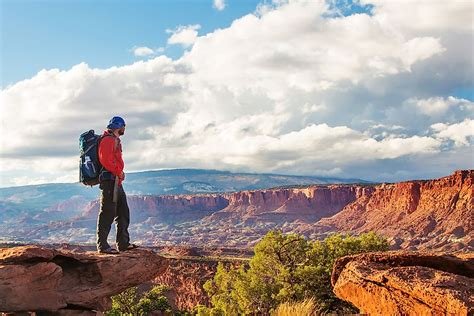Explore backpacking essentials, from selecting your destination to gear, itinerary planning, national park navigation, safety tips, and engaging with local cultures.Embarking on a backpacking journey across the diverse landscapes of the United States can be the adventure of a lifetime, but such an excursion requires careful planning and consideration. Whether you’re drawn to the majestic peaks of the Rockies, the serene beaches of the West Coast, or the vibrant hues of the New England fall, “The Ultimate Guide to Backpacking in the United States” will arm you with all the knowledge you need to select your ideal destination, pack the essential gear, and craft a fulfilling itinerary. In this comprehensive guide, we will delve into the art of navigating the nation’s sprawling national parks and trails, share vital safety tips and precautions, and provide insights on how to respectfully engage with local communities to enrich your cultural experience. Prepare to invigorate your spirit of adventure and forge unforgettable memories, as we guide you step by step on your American backpacking odyssey.
Choosing the Perfect Backpacking Destination
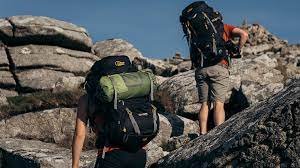
Selecting the perfect backpacking destination is a pivotal decision that will shape your entire adventure. The intrinsic beauty of backpacking lies in its flexibility to accommodate a diverse range of preferences, ensuring there is a suitable path for each participant, be it through the tranquil serenity of untouched forests or the undulating peaks of majestic mountains. Consideration of key factors, such as the climate of the region during your intended dates, the difficulty level of the terrain, and the cultural experiences you wish to immerse in, can greatly influence your final choice. Remember to contemplate the unique offerings each destination presents to align them with your own aspirations and abilities.
Embarking on a backpacking journey demands an awareness of the destination’s infrastructure and the availability of essential services. A more remote and isolated journey might appeal to those seeking solitude and self-reliance, while others may find comfort in choosing a path with well-established trails, frequent rest stops, and proximate local communities. Adequate research into your chosen area, including the likelihood of encountering wildlife or the necessity for specific permits and regulations, is indispensable. This ensures a harmonious experience with the environment while also guaranteeing safety and legality.
The duration of your backpacking trip is another fundamental aspect to take into account when choosing your destination. Whether you’re planning a short weekend getaway or a prolonged expedition, each will have different requirements in terms of the distance you plan to cover, the amount of supplies you need to carry, and the type of accommodation available. Picking a destination that aligns with the timeline of your journey will help in crafting an itinerary that is both enjoyable and feasible, allowing for a pace that encourages exploration, rather than exhaustion.
Lastly, the level of challenge and personal growth you seek from your backpacking experience should play a role in your destination decision. Some backpackers may be driven by the desire to reach new heights, literally and figuratively, opting for destinations that offer challenging hikes and the opportunity for self-discovery or spiritual awe. In contrast, others may prioritize destinations that offer a blend of outdoor activities and cultural interactions, providing a panoramic experience that nurtures both body and soul.
Essential Gear and Equipment for Backpacking
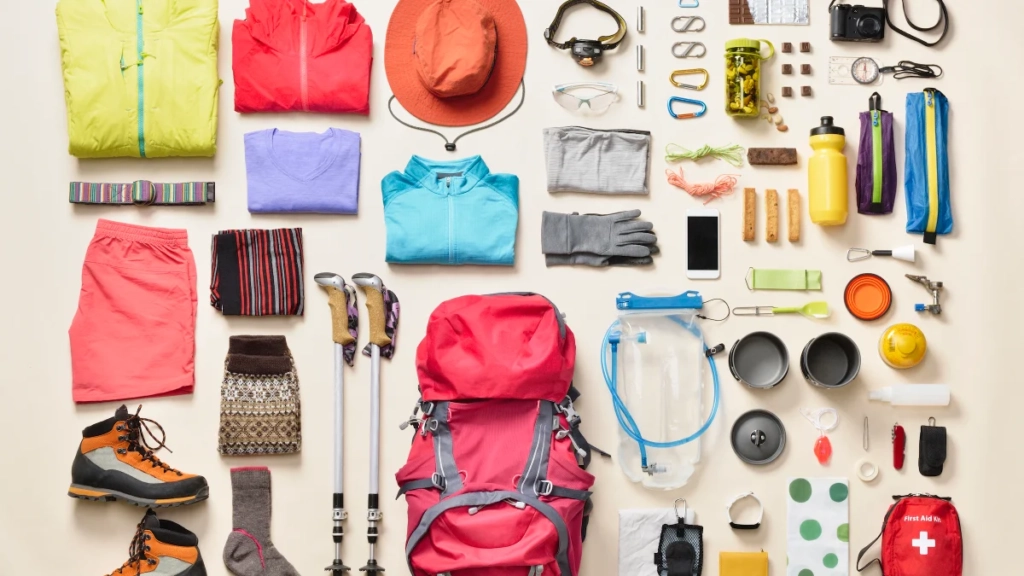
When embarking on any backpacking adventure, the importance of having the right gear and equipment cannot be overstated in ensuring a safe, comfortable, and enjoyable experience. Essential items not only serve their functional purpose but also bring peace of mind, preparing you for the unexpected twists that Mother Nature may throw at you. From navigating remote wilderness areas to setting up camp at the end of a long day, these items are the backbone of your outdoor kit.
First and foremost, a reliable backpacking backpack should be at the heart of your gear. This isn’t just any bag—it’s your mobile base camp, your closet, and your food pantry all in one. It’s vital to choose a backpack that fits well, offers enough space for your journey’s duration, and includes compartments for organization. Next to your backpack, a sleeping bag and pad tailored to the climate of your destination are crucial for a good night’s rest under the stars or in the shelter of a tent.
Another significant consideration is your shelter, commonly a lightweight, durable tent that will shield you from the elements. Accompanying your tent, a set of reliable hiking boots should be selected for their fit, support, and weather-resistant properties, ensuring each step is as stable and dry as possible. Meanwhile, a portable stove and appropriate cookware will serve as your field kitchen, allowing you to refuel with hot meals after the day’s exertions.
Lastly, the smaller yet equally important items such as a first aid kit, water purification system, and navigation tools like maps and a compass, or a GPS device, should always have a reserved spot in your pack. These essentials not only guarantee your well-being but also your ability to remain oriented and hydrated – two pillars of outdoor survival. With the right gear and equipment, backpacking transforms from a mere walk in nature to a symphony of self-reliance and exploration.
Planning Your Backpacking Itinerary
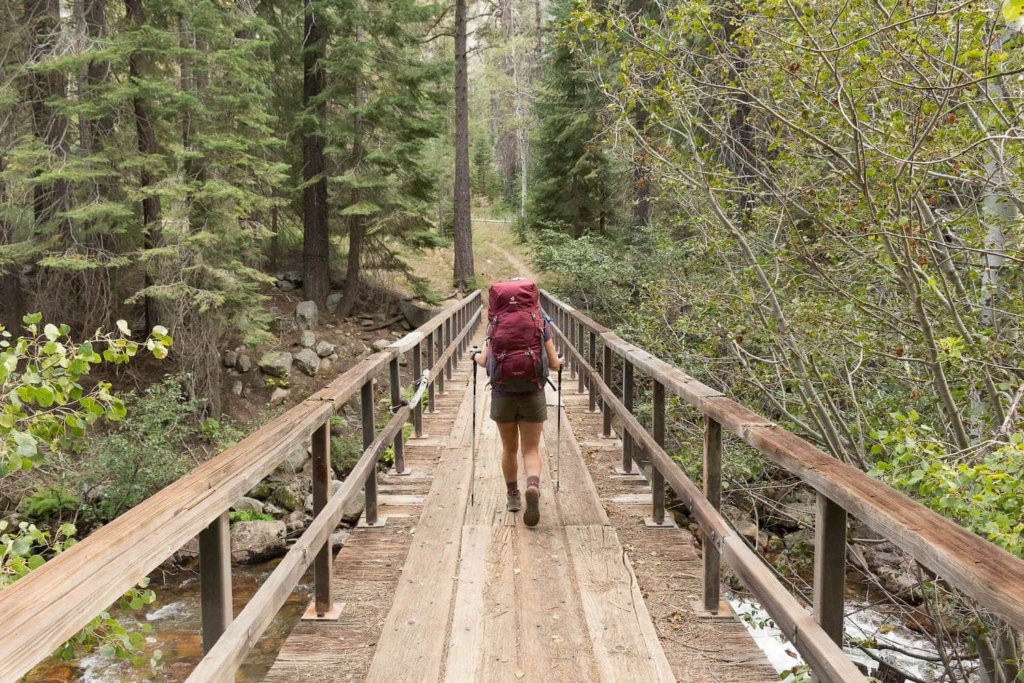
When embarking on the adventure of a lifetime, planning your backpacking itinerary is akin to drawing your personal treasure map, where X marks an ensemble of experiences waiting to be unearthed. Scrutinize possible routes, consider seasonal variations, and allocate ample time for spontaneous encounters; your itinerary shapes not just your path but the memories you will garner. Contemplate not solely upon the envisioned destinations, but on the nuanced journey that connect these dots, for it is within the interstitial moments that the true essence of backpacking often resides. Balance ambition with pragmatism, ensuring a schedule that brims with potential yet bows gracefully to the realities of travel tempo.
As you delve into outlining your journey, infuse vigilance with visions of panoramic vistas, foster a plan that leaps from the soul-stirring tranquility of alpine meadows to the heart-pounding exhilaration of unfurling terrains. Do not underestimate the importance of pacing; a well-crafted backpacking itinerary negotiates the fine line between wanderlust-driven marathons and enriching strolls through the fabric of natural wonders. Let your plan mirror your inner rhythm, dance to the tempo of your curiosity and stamina, while leaving room for the unexpected whispers of the wild to guide your stride.
Within the embrace of unknown lands, astute navigators understand that the art of planning is the art of anticipation, paired with the acceptance of surrending control to the spontaneity that travel inherently incurs. Look ahead and meticulously plan your stops, weighing the magnetic allure of must-see landmarks against the beguiling charm of hidden gems. It is in the congruence of anticipated sights and unforeseen delights where true adventure weaves its indelible patterns. In laying the groundwork for your travels, wrap the notion of ‘schedule’ in a tapestry of flexibility, allowing the narrative of your journey to unfold in hues and tones as varied as the landscapes which will cradle your footsteps.
To finalize a well-rounded backpacking itinerary, integrate the wisdom garnered from fellow travellers’ whispers, blogs awash with firsthand accounts, and the invaluable information resting in the hands of local denizens. A backpacking journey is a masterpiece painted with the brushes of preparation and the palette of spontaneity, rendering a tableau where every step charts a course through the realm of sublime discovery. Factor in the unpredictable nature of travel, forge a plan tempered by adaptability, and walk forth with a heart open to the magnetic pull of the trail’s serendipitous embrace. Your itinerary is not just a plan; it is the very first chapter in the epic tale of your latest quest.
Navigating the National Parks and Trails
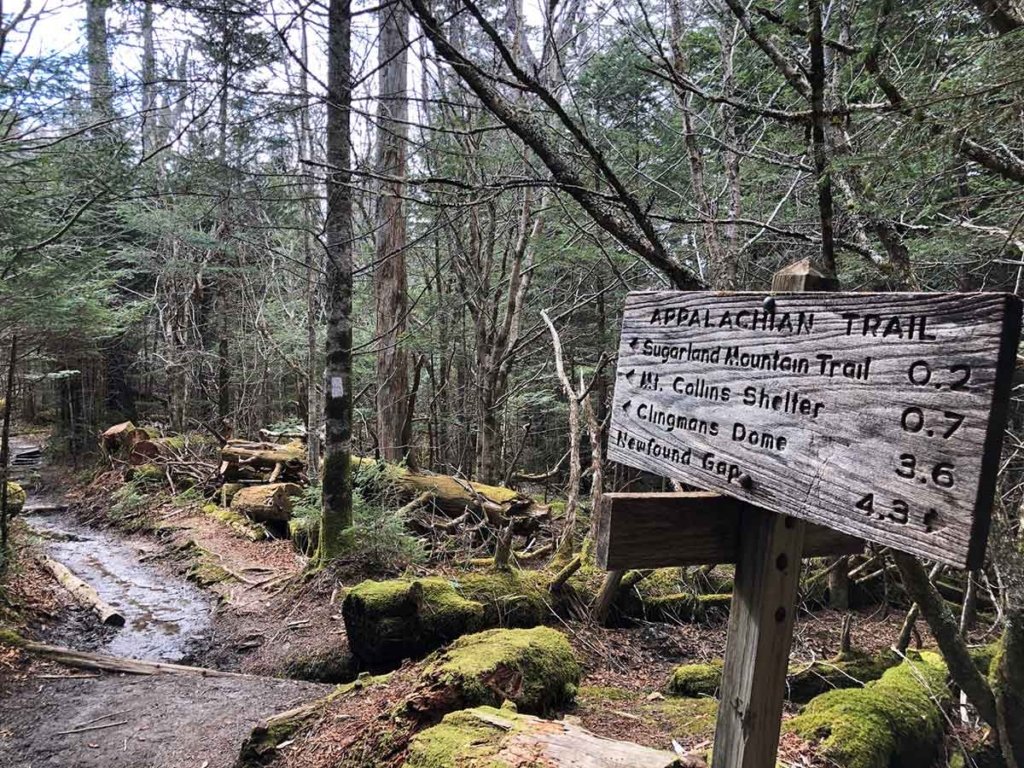
Embarking on an adventure through the sprawling landscapes of national parks and trails can be a transformative experience that amalgamates the beauty of nature with the thrill of exploration. As you weave your way through a mosaic of lush forests, arid deserts, or rugged mountain passes, an adept understanding of navigation is paramount to ensure a rewarding and secure journey. Navigating the winding paths and expansive wilderness requires diligent preparation, commencing with the procurement of accurate and up-to-date maps, the mastery of using a magnetic compass, and the prudence of establishing checkpoints along your planned route.
The utilization of technology, specifically GPS devices and smartphone applications, has revolutionized the way modern explorers traverse the intricate networks of trails within these natural havens. Nonetheless, it is wise for backpackers to gain proficiency in traditional orienteering skills as technological gadgets may falter amidst the remote corners of the great outdoors. Such skills include the ability to discern topographical features, recognize trail blazes and markers, and interpret natural landmarks as guides.
When venturing into less trodden paths or during inclement weather, the landscape’s visage can be cloaked in obscurity, challenging the most experienced navigators. The savvy backpacker will always inform a trustworthy contact about their intended route and expected return time, providing a safety net should one encounter unforeseen circumstances. This precaution, combined with a keen awareness of one’s surroundings and adherence to trail etiquette, ensures that the natural integrity of these protected areas is upheld for future generations to cherish.
As you negotiate the terrain, remember that navigating national parks and trails is not solely about reaching a destination; it is a pursuit imbued with moments that teach resilience, inspire awe, and foster a deep connection with the environment. Whether you are scaling a breathtaking summit or pausing to revel in a tranquil valley, each step is a testament to the human spirit’s perpetual quest to journey through the majesty of our planet’s untouched sanctuaries.
Safety Tips and Precautions for Backpackers
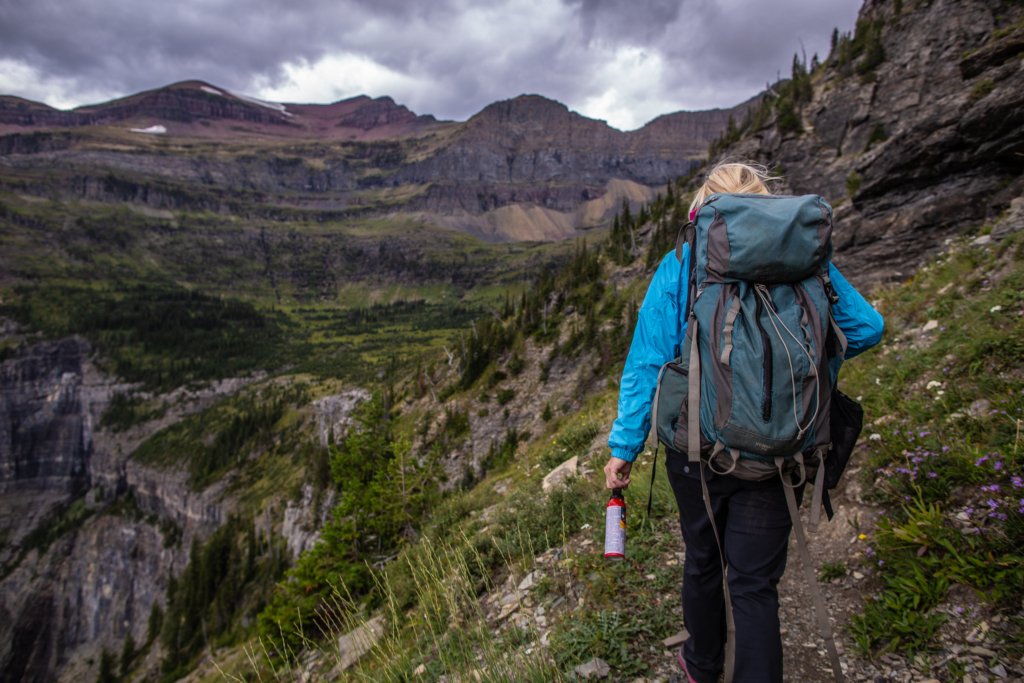
When embarking on a backpacking adventure, prioritizing your safety is paramount to ensuring an enjoyable, memorable experience. Understanding the landscape and the unique challenges it may present calls for thorough preparation and an adherence to best practices for outdoor safety. It is vital for backpackers to recognize that while the wilderness offers an escape from the hustle and bustle of everyday life, it can also pose significant risks that should never be underestimated; hence, acquiring knowledge on local wildlife, weather patterns, and terrains becomes an essential part of the pre-trip planning process.
An overlooked but critical aspect of backpacking safety involves having the appropriate gear and equipment tailored to the environment you’ll be traversing. It’s crucial for backpackers to invest in a reliable GPS device or topographic maps, alongside a sturdy pair of boots that have been broken in to prevent foot injuries. Furthermore, personal protection devices, such as bear spray in bear country, can serve as invaluable tools for deterring wildlife encounters. The mantra ‘be prepared for anything’ should be taken to heart, as it is far better to carry an item and not need it than to find oneself in dire need of it out in the wilderness.
Should an emergency arise, having a solid communication plan is a cornerstone of backpacker safety. This means not only carrying a means of reaching out for help, like a satellite phone or an emergency beacon, but also ensuring that someone responsible knows your itinerary and expected return time. This dual-layered approach to communication enables rescuers to locate and assist you more efficiently, thus increasing your chances of a positive outcome in an unexpected situation. Bear in mind that even with the most careful preparation, the unpredictable nature of outdoor adventures necessitates a level of self-reliance that can only be honed through experience and respect for the wild.
Finally, a safe backpacking trip is the result of continuous risk assessment and decision-making. This encompasses everything from gauging river crossings to evaluating the risks of altitude sickness in high elevations. Backpackers must be vigilant and ready to adapt their plans as conditions change. Education on proper food storage, fire safety, and Leave No Trace principles can not only prevent accidents but also preserve the integrity of the natural environments we seek to enjoy. By proactively taking safety tips and precautions, backpackers can confidently embrace the spirit of adventure while minimizing the risks inherent to stepping off the beaten path.
Immersion in Culture: Engaging with Local Communities

When embarking on a backpacking trip, the quest for a deeper immersion in culture can significantly enhance the travel experience. Engaging with local communities allows backpackers to gain insights into the customs, traditions, and daily lives of those living in their chosen destinations. Rather than observing from a distance, this approach involves active participation and a willingness to step outside one’s comfort zone to form meaningful connections with local people.
First steps towards cultural immersion often involve learning basic phrases in the local language, which demonstrates respect and an eagerness to communicate, fostering goodwill among the populace. Travelers should also make an effort to learn about and respect local customs and etiquette, as this can help prevent misunderstandings and shows a level of care and appreciation that goes beyond that of an average tourist. Furthermore, participating in community activities, such as local festivals or markets, can offer enriching experiences that are both authentic and memorable.
Seeking out opportunities for cultural exchange can be incredibly rewarding. This might include joining a local cooking class, volunteering within the community, or staying with a host family. Such interactions provide an unparalleled opportunity to understand the true essence of a destination, often leading to lasting friendships and a sense of global citizenship. It’s important to approach these exchanges with sensitivity and openness, ensuring that they are mutually beneficial and respectful of local traditions and values.
It is essential for backpackers to remember that immersion in culture is not about simply taking from the experience but also about giving back to the communities they visit. This can be achieved by supporting local businesses, engaging in sustainable travel practices, and promoting ethical tourism. By adopting a mindful and conscientious approach to travel, backpackers can contribute positively to the communities they visit while enriching their own lives with unforgettable cultural encounters.
Frequently Asked Questions
How do I choose the perfect backpacking destination in the United States?
Consider factors such as your fitness level, interests in history or nature, the season you’re planning to travel in, and the type of experience you’re looking for, whether it’s solitude in wilderness or a more social trail. Research the varying landscapes the U.S. has to offer, from national parks to coastal trails, and decide what appeals to you most.
What are some essential gear and equipment I should pack for backpacking?
The essentials include a high-quality backpack, a durable tent, a sleeping bag appropriate for the season, a portable stove, reliable navigation tools, and clothing suitable for changeable weather. Don’t forget a first-aid kit, food and water supplies, as well as any personal items that can enhance your experience, like a camera or a journal.
How should I plan my backpacking itinerary?
Start by determining the length of your trip and the distance you can comfortably hike each day. Research the destinations to find must-see spots and attractions. Make sure to consider time for rest and exploration. Check for permits or reservations needed, and always have a contingency plan.
What tips do you have for navigating the national parks and trails?
Get a map of the area and familiarize yourself with the park’s layout. Use GPS devices and compasses for assistance, and always stick to marked trails to minimize the impact on the environment. Also, check with park rangers for updates on trail conditions and closures.
What safety tips and precautions are important for backpackers?
Always inform someone of your itinerary and expected return. Educate yourself about the wildlife and how to handle encounters. Pack appropriate gear for sudden weather changes, and be aware of your physical limits. It’s also crucial to carry enough food and water, know first aid procedures, and have a plan for emergency situations.
How can I engage with local communities when backpacking?
Visit local markets, dine in family-owned restaurants, and participate in community events or festivals. Consider staying in local hostels or B&Bs. Learn a few phrases in the local dialect and show respect for local customs and traditions. Volunteering for conservation projects can also be a great way to give back to the places you visit.
Are there strategies for environmentally-friendly backpacking?
Practice Leave No Trace principles by packing out all garbage, respecting wildlife, and leaving areas as you found them. Choose biodegradable products, use established campsites to reduce your impact, and consider participating in trail maintenance or other eco-focused activities during your trip.
